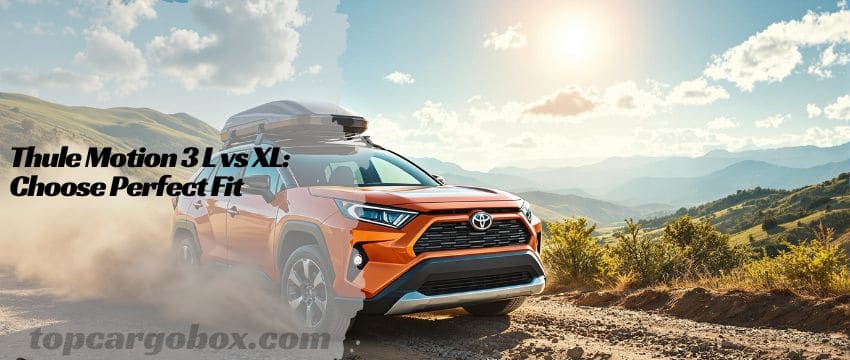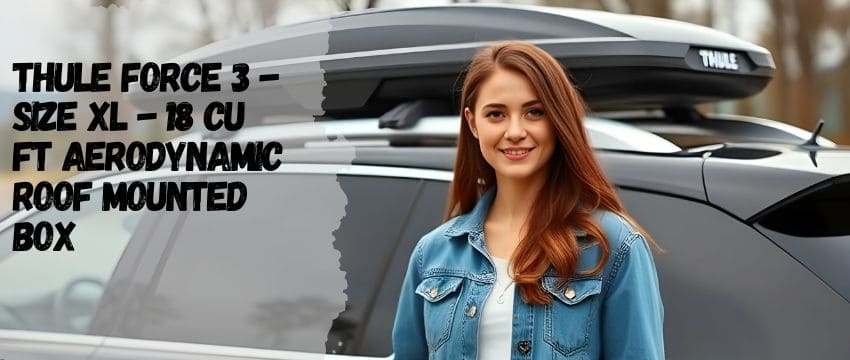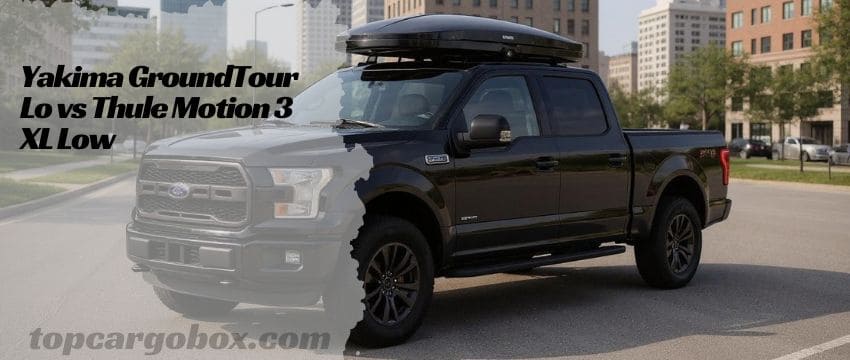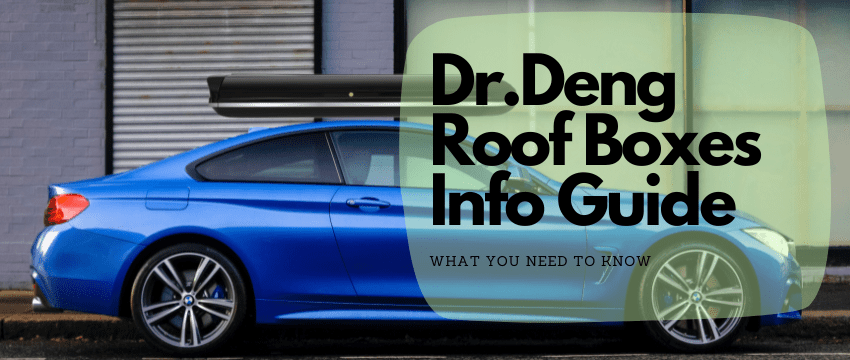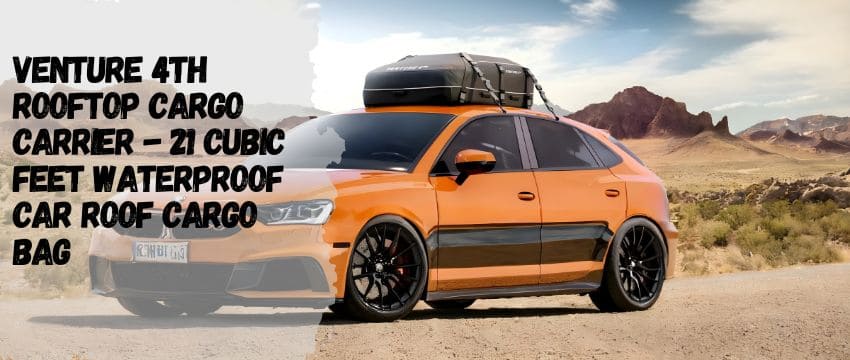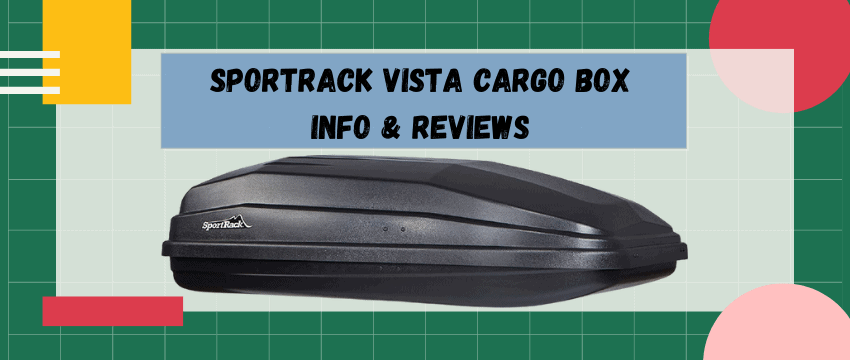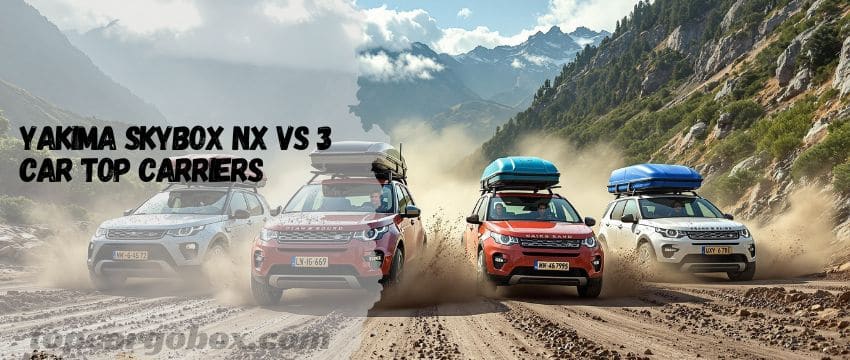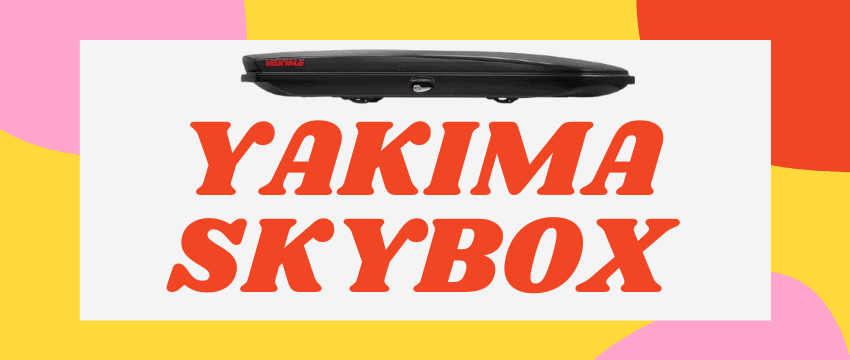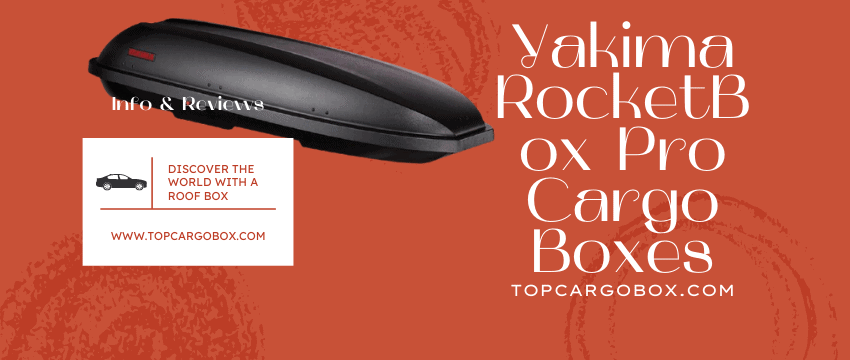What’s up, road trip warriors and gear haulers? Feeling that familiar squeeze trying to fit everything for your next adventure into the car? Totally get it. You’re eyeing the awesome Thule Motion 3 roof box – legit choice for style and function – but now you’re stuck wondering: L or XL? Which one won’t turn your SUV into a sailboat or leave you wishing for just a bit more space? Let’s break it down, no jargon, just real talk about finding your perfect cargo companion.
Understanding the Thule Motion 3 Magic
Before we dive deep into sizing, let’s vibe with what makes the Motion 3 so popular. Thule nailed it by blending killer looks with seriously smart engineering. This isn’t just a plastic tub strapped to your roof; it’s designed to enhance your journey. Imagine sleek lines that actually make your car look better, not like it sprouted a weird growth. How awesome is that? Plus, features like the one-hand open/close lid? Pure genius when your arms are full of bags or muddy boots. Feeling under the weather after a long drive? The SlideLock system gives you peace of mind that your gear is secure without any complicated fumbling. It’s the little things that make a big difference on the road.
Why Size Seriously Matters
Okay, let’s get real about why choosing between the L and XL isn’t just a random guess. Slap the wrong size on your ride, and you could be dealing with major headaches. Picture this: an XL box on a smaller car looking totally ridiculous and maybe even scraping low garage ceilings. Bummer, right? Conversely, an L box on your packed-to-the-gills family minivan might mean leaving behind junior’s bike or your favorite camp chair. That sucks! It’s also about driving feel. A box that’s too big can catch more wind, potentially making your car feel less stable and guzzling more gas. Getting the size right means better looks, better driving, and packing everything you actually need. Who doesn’t want that efficiency?
Meet the Contender: Thule Motion 3 L

Alright, let’s spotlight the Thule Motion 3 L. Think of this as the versatile middle child – often the sweet spot for many drivers. Offering a solid 16 cubic feet of internal space, it’s surprisingly roomy. We’re talking about fitting gear for a family weekend getaway or a serious ski trip for a couple. Off the top of my head, you could easily stash 5-7 pairs of skis (up to 180 cm long) or 3-5 snowboards. Dimensions-wise, it measures 76.5 inches long, 34.2 inches wide, and 16.5 inches high externally. It sits 15 inches off your crossbars and weighs in at 43.6 pounds – manageable for most folks to lift. Its 165-pound load capacity means you can pack it fairly full without worry. This size is a champ for midsize SUVs, wagons, and even larger sedans, giving you that extra space without overwhelming your vehicle’s profile. Pretty good balance, yeah?
Thule Motion 3 L Key Specs
Feature | Specification |
|---|---|
Volume | 16 cu ft |
Ext. Dims | 76.5″ L x 34.2″ W x 16.5″ H |
Int. Dims | 72″ L x 28″ W x 15″ H |
Height off Bar | 15″ |
Load Capacity | 165 lb |
Weight | 43.6 lb |
Mount System | PowerClick |
Lock System | SlideLock |
Max Ski Length | 180 cm |
Ski Pairs | 5-7 |
Snowboards | 3-5 |
Now, the Bigger Brother: Thule Motion 3 XL
Need more? How’s it going, large-family adventurers or folks with all the gear? The Thule Motion 3 XL steps up to the plate. This beast delivers a spacious 18 cubic feet of internal volume. That extra 2 cubic feet might not sound massive, but trust me, it makes a world of difference when packing bulky items like tents, multiple duffel bags, or multiple sets of golf clubs. It handles longer skis too – up to a whopping 200 cm. Externally, it stretches to 84.7 inches long, 35 inches wide, and 17 inches high. Despite its larger footprint, it maintains the same 15-inch height off the crossbars and the same robust 165-pound load capacity. The trade-off? It weighs 51 pounds, so lifting it solo might require a bit more grunt. This box shines on larger SUVs, trucks, minivans, or for anyone who consistently maxes out their vehicle’s interior space. For real, if you need capacity, this is it.

Thule Motion 3 XL Key Specs
Feature | Specification |
|---|---|
Volume | 18 cu ft |
Ext. Dims | 84.7″ L x 35″ W x 17″ H |
Int. Dims | 80″ L x 29″ W x 15″ H |
Height off Bar | 15″ |
Load Capacity | 165 lb |
Weight | 51 lb |
Mount System | PowerClick |
Lock System | SlideLock |
Max Ski Length | 200 cm |
Ski Pairs | 5-7 |
Snowboards | 3-5 |
Head-to-Head: L vs XL – Where They Differ
So, L or XL? Let’s hang out with the specifics for a sec. The core difference boils down to length and volume. The XL is 8.2 inches longer and offers 2 extra cubic feet inside. This directly translates to what you can pack: the XL easily handles longer skis (200 cm vs 180 cm) and gives you more room for bulkier, softer items like sleeping bags or luggage. Weight-wise, the XL is about 7.4 pounds heavier. Crucially, both share the same awesome features: the slick SlideLock, the easy PowerClick mounting (that satisfying “click” when it’s tight!), the one-hand opening, and the same 165-pound max load. The aerodynamic profiles are similar too, designed to minimize drag, though the XL’s larger frontal area might have a slightly more noticeable impact on fuel economy depending on your vehicle. It is what it is.
Which Vehicle Are You Rocking?
Dude, your car is the single biggest factor here! You absolutely cannot ignore your vehicle’s roof size and shape. Slapping an XL box on a compact car? Come on, that’s asking for trouble – it’ll look awkward, might overhang dangerously, and seriously hurt your gas mileage. Conversely, an L box on a massive Suburban or Expedition might look a bit small and leave unused roof space. How do you even know? First, measure your usable roof length between the front and rear doors. Then, consider your vehicle’s height – will an XL make you too tall for your garage or parking structures? Most manufacturers, including Thule, have online fit guides where you enter your car’s make/model/year. Seriously, use them! It takes 5 minutes and saves major headaches. Checking out a guide like our Complete Guide to Thule Car Roof Boxes can also give you the lowdown on general compatibility principles.
What’s Your Adventure Style? (Be Honest!)
Bro, be real with yourself about what you actually do. Are you mainly weekend warriors hitting nearby trails or beaches with a couple of buddies? The L might be totally sufficient. Packing for a family of 4 or 5 for a 2-week national park tour? Yeah, the XL starts looking pretty essential. Hardcore skiers or boarders with long sticks? That 200 cm capacity on the XL is clutch. Do you mostly carry bulky but relatively light stuff (camping gear, luggage)? The XL’s extra volume shines. Hauling denser, heavier items? Remember, both boxes top out at 165 pounds. Think about your most common trip and your dream trip. Buying for the dream might mean sizing up to the XL. Feeling like you might need alternatives if Thule stretches the budget? We’ve got ideas on Affordable Alternatives to Thule too. Fair enough?

Don’t Forget the Practical Stuff
Let’s talk about the less glamorous, but oh-so-important, realities. Weight: Can you comfortably lift 51 pounds (XL) overhead and maneuver it onto your roof rails? If not, the lighter L (43.6 pounds) or some help from a friend might be necessary. Storage: Where will this beast live when not on your car? The XL takes up more space in your garage or shed. Garage clearance: Measure twice! Add the box height (17 inches for XL, 16.5 inches for L) plus the 15 inches off the bar, plus your crossbar height, plus your vehicle height. Will it clear your garage door? Getting stuck outside sucks. Also, consider access – the Motion 3’s forward tilt design helps, but a longer XL might still impede your trunk liftgate slightly more than an L on some vehicles. It’s a long shot, but better safe than sorry.
Beyond the Box: Accessories Can Elevate Your Game
Yo, the Motion 3 itself is awesome, but Thule’s accessory game is strong. Think about adding a protective liner – seriously, this saves the box interior from scratches and makes cleaning out dirt or melted snow a breeze. Planning night returns? The interior LED light is a game-changer for finding your gear in the dark. When storing the box off-season, a storage cover protects it from dust and UV damage, keeping it looking fresh. For packing efficiency, check out gear like the Thule GoPack Duffel – designed to maximize space. These extras aren’t essential, but they make using the box even smoother and protect your investment. Totally worth considering.
Making Your Final Choice: L or XL?
Alright, decision time! How’s it going? Still torn? Here’s the quick recap: Choose the Thule Motion 3 L if you drive a midsize vehicle (SUV, wagon, large sedan), typically travel with a smaller group (2-4 people), prioritize a balance of space and manageable size/weight, and usually carry gear under 180 cm. It’s the versatile all-rounder. Go for the Thule Motion 3 XL if you have a large SUV, minivan, or truck, regularly travel with 4+ people or a ton of bulky gear, need to carry skis up to 200 cm, and have the storage space and strength to handle its larger footprint. It’s the capacity king. Still unsure? Double-check those vehicle fit guides! Knowing how Thule compares to others, like in our Thule Motion 3 vs Competitors piece, might also help contextualize your choice.

Wrapping It Up: Adventure Awaits!
No way! You’re almost ready to conquer the open road with all your gear in tow. Choosing between the Thule Motion 3 L and XL boils down to matching the box size to your specific car and your unique adventure style. Both boxes deliver that killer Thule blend of style, security (SlideLock is legit), and ease-of-use (one-hand opening for the win!). Whether you pick the versatile L or the spacious XL, you’re getting a top-tier cargo box designed for hassle-free exploration. Remember to measure your car, be honest about your gear needs, and consider those practicalities like weight and storage. Do that, and you’ll be hitting the road with confidence and everything you need. Sounds good? Catch you on the highway!
Compatibility and Vehicles
Compact & Midsize Sedans
(Crossbar spread typically 24–36″)
Vehicle Model | Thule Motion 3 Size | Why It Fits |
|---|---|---|
Toyota Camry | L Only | XL overhangs windshield/trunk; L’s 74″ length fits cleanly. |
Honda Accord | L Only | Short roof + low dynamic load limit (~100 lbs) favors the lighter L. |
Nissan Altima | L Only | Aerodynamic profile pairs best with L’s low drag. XL blocks rear visibility. |
Hyundai Sonata | L Only | Limited roof space; XL risks antenna/trunk contact. |
Compact SUVs & Crossovers
(Crossbar spread typically 28–42″)
Vehicle Model | Thule Motion 3 Size | Why It Fits |
|---|---|---|
Honda CR-V | L Recommended | XL (83″) overhangs significantly; L maximizes utility without drag. |
Toyota RAV4 | L Recommended | Roof load limit (~165 lbs) fits L best; XL strains limits when fully loaded. |
Ford Escape | L Recommended | Short rear hatch clearance; XL blocks rear wiper/antenna. |
Subaru Forester | XL Possible | Exception: Longer roof allows XL if crossbars are spread >40″ (measure!). |
Midsize & Full-Size SUVs/Trucks
(Crossbar spread typically 40–55″)
Vehicle Model | Thule Motion 3 Size | Why It Fits |
|---|---|---|
Ford Explorer | XL | Massive roof handles XL’s length/weight; L looks undersized. |
Jeep Grand Cherokee | XL | High load limit (175+ lbs) and long rails fit XL perfectly. |
Chevrolet Tahoe | XL | 83″ XL centers cleanly; carries gear for 7+ passengers. |
Toyota 4Runner | XL | Rugged roof supports heavy loads; XL’s extra space for off-grid gear. |
Minivans
(Crossbar spread 45–60″)
Vehicle Model | Thule Motion 3 Size | Why It Fits |
|---|---|---|
Honda Odyssey | XL | Epic roof length swallows XL; carries strollers + luggage easily. |
Toyota Sienna | XL | Low roofline + XL = easy loading; 600L capacity for Costco runs. |
Chrysler Pacifica | XL | Panoramic sunroof? Use rear-mounted XL—no shade interference. |
Your Thule Motion 3 L vs XL Questions Answered
How many suitcases fit in Thule XL?
For real, it depends on the suitcase size! Off the top of my head, you could likely fit 4 to 5 large checked-size suitcases (28-32 inches) inside the Thule Motion 3 XL, assuming they aren’t packed absolutely solid. If you’re using smaller carry-on size (22 inches), you could probably fit 6 or 7, maybe more if you pack them efficiently. Remember the internal dimensions are roughly 80 inches long x 29 inches wide x 15 inches high. Soft-sided duffels often pack more efficiently than hard-shell cases. Also, don’t forget the 165-pound weight limit applies no matter how many you squeeze in! Totally pack smart.
What is the capacity of the Thule Motion XT XL?
Whoa, hold up! The Motion XT is a different model line, bro. This article focuses on the newer Motion 3. But just for clarity, the Thule Motion XT XL has a larger capacity than the Motion 3 XL. The Motion XT XL typically offers around 22 cubic feet of space, compared to the Motion 3 XL’s 18 cubic feet. The XT series is generally taller and boxier, hence the bigger volume, but often with slightly higher wind noise and less aerodynamic efficiency than the sleeker Motion 3. If you’re comparing models, check out our Thule Motion XT vs Thule Force guide for more details on the XT specifically. The Motion 3 XL prioritizes a lower profile.
What is the difference between Thule Motion XT and 3?
The Thule Motion 3 is the newer generation, replacing the older Motion XT. The main upgrades? Dude, the Motion 3 has a significantly more aerodynamic shape, especially at the front, aiming for better fuel efficiency and less wind noise. It features the improved SlideLock system for easier, more secure locking compared to the XT’s older mechanism. The Motion 3 also boasts a wider, more ergonomic handle for one-handed opening/closing. Visually, the Motion 3 has cleaner lines and a more modern aesthetic. Both are great boxes, but the Motion 3 represents Thule’s latest refinements in design and user-friendliness. You can see a dedicated overview of the Motion 3 features on our Thule Motion 3 Rooftop Box page.
Do Thule racks fit all cars?
Nah, unfortunately not. While Thule makes racks and fittings for a huge range of vehicles, it’s definitely not universal. They design specific foot packs, fit kits, and sometimes vehicle-specific bars to ensure a secure and safe fit on different roof types (naked roof, fixed points, raised rails, flush rails). The key is using Thule’s fit guide on their website or consulting a retailer – you input your exact car year, make, and model, and it tells you exactly which parts you need. Trying to force the wrong fit is risky and could damage your car or lead to the rack failing. Always double-check compatibility before buying!
How do I know if Thule will fit my car?
Easy peasy! The best way is to use the official Thule Fit Guide on their website. You’ll need your vehicle’s exact year, make, and model. The guide will ask about your roof type (e.g., does it have raised side rails, fixed points, or is it bare?). It then shows you the compatible Thule base systems (foot packs), the specific fit kit number you need (this adapts the feet to your car’s contours/points), and the recommended crossbar lengths. It might also show compatible boxes. Alternatively, visit a reputable rack retailer – they have access to the same databases and can help you find the perfect setup. Don’t guess; use the tools!
How do I know what roof rack will fit my car?
Same principle as Thule, bro! Most major rack brands (Yakima, Rhino-Rack, etc.) have their own online vehicle fit guides. Start there – enter your car details, and it’ll show compatible systems. The critical factors are your vehicle’s roof type and the rack system’s mounting style. You need components designed to work together safely on your specific roof. Checking forums or owner groups for your car model can also provide real-world advice on what racks people use successfully. If you’re unsure, definitely consult a professional installer or a specialized outdoor retailer. Getting the right fit is crucial for safety and protecting your car. No big deal to check, but a huge deal to get wrong!
Our team is creating outdoor-gear relevant articles with passion. If our articles can help you to find the correct solutions for your questions, we will be happy about that. In the content creation process, we usually collect accurate and useful information online or offline to compile our content in an organized way. Consequently, we can guarantee that you can discover some expected answers to your questions. We appreciate your time on our site.

